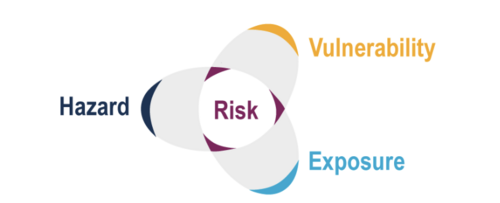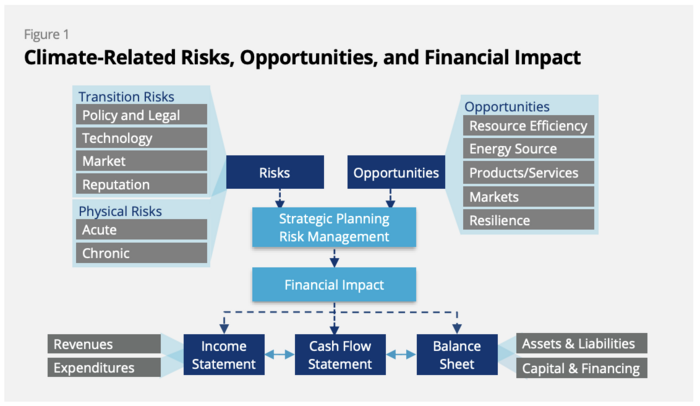Main Page: Difference between revisions
No edit summary |
No edit summary |
||
| Line 10: | Line 10: | ||
</div> | </div> | ||
<!-- Note --> | |||
<!-- Basic structure below > | |||
-- open whole page set up | |||
-- open Left column | |||
<open mini page of left column 1> | |||
<close mini page 1> | |||
<open mini page of left column 2> | |||
<close mini page 2> | |||
-- <close left column> | |||
-- Right column... | |||
-- close whole page | |||
--> | |||
<div style="display: flex; justify-content: space-between; margin-bottom: 20px;"> | <div style="display: flex; justify-content: space-between; margin-bottom: 20px;"> | ||
Revision as of 18:31, 16 September 2024
Welcome to UW Climate Risk Lab Wiki,
the place for best climate risk data, analysis, and tools available for all.
UW Climate Risk Lab
The UW Climate Risk Lab (CRL) is a multidisciplinary research and innovation center based at the University of Washington Foster School of Business in the Department of Finance & Business Economics. Established in 2022, it advances data and technology solutions to issues in climate-related financial risk for corporate and government decision-makers. Phillip Bruner, co-founder of the CRL, currently serves as its Executive Director.
The CRL brings together academics and professionals in climate finance, risk management, business analytics, data engineering, computer science, atmospheric sciences, supply chains management, information systems and AI. It collaborates with several initiatives within the University of Washington (UW), which include the Buerk Center for Entrepreneurship, Clean Energy Institute, Creative Destruction Lab, eSciences Institute and Urban Infrastructure Lab. Its external partners include: the Duke Energy Data Analytics Lab, the Pacific Northwest Mission Accelerator Center, and Washington Maritime Blue.
License Information
This website’s content is licensed under a Creative Commons Attribution 4.0 International License.
You are free to:
- Share — copy and redistribute the material in any medium or format for any purpose, even commercially.
- Adapt — remix, transform, and build upon the material for any purpose, even commercially.
- The licensor cannot revoke these freedoms as long as you follow the license terms.
Under the following terms:
- Attribution — You must give appropriate credit, provide a link to the license, and indicate if changes were made. You may do so in any reasonable manner, but not in any way that suggests the licensor endorses you or your use.
- No additional restrictions — You may not apply legal terms or technological measures that legally restrict others from doing anything the license permits.
Climate change is already impacting the Earth dramatically[1], and the continued rise in greenhouse gas emissions will cause further warming of the planet, leading to significant socio-economic consequences. These impacts pose substantial risks to businesses, particularly those in vulnerable industries, affecting their credit profiles, share prices, and overall financial stability.
While the general understanding that climate change poses risks is widely accepted, it is not enough for lenders, investors, or regulators to act effectively without a clearer definition of the specific financial risks. These risks need to be quantified in terms of their scope, timing, and probability of occurrence. Identifying and understanding climate-related financial risks early on is critical, as they can lead to reduced asset utilization or valuation, decreased income, and lower profit margins. These financial impacts can translate into increased credit risk, influencing lenders' decisions and reshaping the financial profiles of affected industries.[2]
Data
The risk of climate change impacts results from dynamic interactions among climate-related hazards, the exposure and vulnerability of affected human and ecological systems, and also responses (see section 1.2.1 of IPCC AR6 WG2[4]), as illustrated by Figure 2.
The data required for climate risk assessment is therefore organized into three key areas: climate hazard, exposure, and vulnerability, for the two types of climate risks below:

Source: IPCC AR6 WG2
References
- ↑ IPCC, 2023: Climate Change 2023: Synthesis Report. Contribution of Working Groups I, II and III to the Sixth Assessment Report of the Intergovernmental Panel on Climate Change [Core Writing Team, H. Lee and J. Romero (eds.)]. IPCC, Geneva, Switzerland, pp. 35-115, doi: 10.59327/IPCC/AR6-9789291691647.
- ↑ Imperial College Business School Center for Climate Finance & Investment (February 2022). “What is Climate Risk? A Field Guide for Investors, Lenders, and Regulators.” Available at: https://imperialcollegelondon.app.box.com/s/te5eahz3x47q93vufwwu3ntmf5rxecxs
- ↑ Taskforce on Climate-Related Financial Disclosures (June 2017). “Recommendations of the Taskforce on Climate-related Financial Disclosures: Final Report.” Available at: https://assets.bbhub.io/company/sites/60/2021/10/FINAL-2017-TCFD-Report.pdf
- ↑ Figure 1.5 in Ara Begum, R., R. Lempert, E. Ali, T.A. Benjaminsen, T. Bernauer, W. Cramer, X. Cui, K. Mach, G. Nagy, N.C. Stenseth, R. Sukumar, and P. Wester, 2022: Point of Departure and Key Concepts. In: Climate Change 2022: Impacts, Adaptation, and Vulnerability. Contribution of Working Group II to the Sixth Assessment Report of the Intergovernmental Panel on Climate Change [H.-O. Pörtner, D.C. Roberts, M. Tignor, E.S. Poloczanska, K. Mintenbeck, A. Alegría, M. Craig, S. Langsdorf, S. Löschke, V. Möller, A. Okem, B. Rama (eds.)]. Cambridge University Press, Cambridge, UK and New York, NY, USA, pp. 121-196, doi:10.1017/9781009325844.003.
